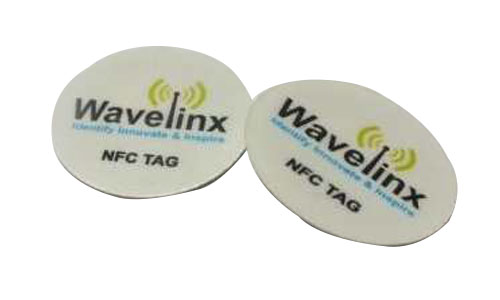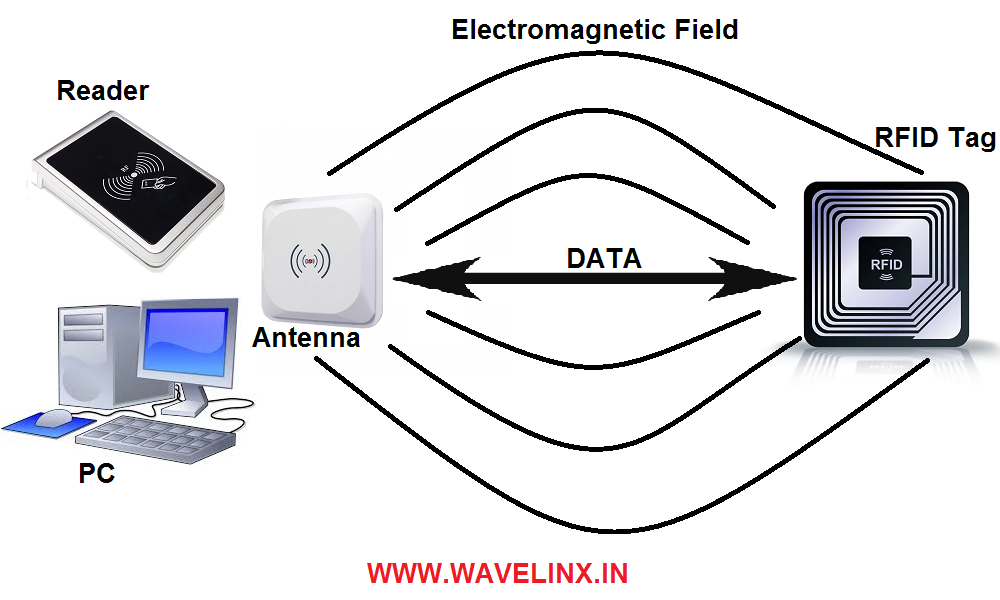RFID technology, which is also known as a radio frequency identification. So, in this article we will see what is RFID, what are the different applications of the RFID, what is inside this RFID chip and how this RFID works.So first of all, let’s start with what is RFID. So,this radio frequency identification or RFID is a technology which is working on radio frequency of radio waves. So, this technology is used to automatically identifying the object or tracking the objects. Now,here this object could be anything. The objects could be books in a library or it could be any item which are purchasing from the shopping mall or it could be the inventory in the warehouse or maybe it could be your own car. And not only the objects but it can be used for the tracking the animals as well as the birds. So in this RFID Technology the RFID tag is used to get attached to the object which he wants to track.

So this RFID reader is continuously sending radio waves. So whenever this object is in the range of the reader then this RFID tag used to transmit its feedback signal to the reader. So it is very similar to the technology which is used in a barcode. But in case of a barcode the object and the scanner should be in line of sight. As This RFID technology is not a line of sight technology, so as far as this object is within the range of the reader, object is able to identify the reader and it is able to send the feedback single back to the reader. So using this RFID Technology we can track even multiple objects at the same time.
RFID System
So, now let us see what is inside this RFID system. So as we have already discussed , this RFID system contains two components. RFID reader and the RFID tag. Now this RFID tags are also coming in many ways. This RFID tag could be a active tag, it could be a passive tag or it could be a semi passive tag. Now this passive tag do not have their own power supply. So this passive tag relies on the radio waves which is coming from the RFID reader for the source of energy. While in case of a semi passive tag, they used to have their own power supply. But for transmitting the feedback signal back to the RFID reader they used to rely on the signal which is coming from the RFID reader. While in case of a active tag, they used to have their own power supply. But for transmitting the signal Back To The Reader also they are relying on their own power supply. So, as this passive tag do not have their own power supply, so the range is less compared to the active and semi passive tags.
Alright, so now first of all let’s see what is inside is RFID Reader. So this RFID readers are coming in a many size and shapes. So this RFID reader could be your handheld reader or it could be as large as the size of the door which normally see inside the shopping malls.So this RFID reader mainly consists of three components. So the first component of the RFID reader is RF Signal Generator. So this signal generator generates radio wave which are transmitted using this antenna. Also to receive the feedback signal which is coming from the tag, the RFID reader also have a receiver of signal detector. And to process the information which is being sent by the RFID tag, this RFID reader also have micro-controller. Or many times this RFID reader is directly connected to the computer.
RFID tags
So, now let us see about the RFID tags. so most of the tags, which are being used today are passive tags. Because this passive tags are quite cheaper compared to the active tags, as well as, as they do not require any power source, so they are quite compact. So this passive tags are also coming in many forms. So this passive tag could be either size of a key chain or it could be the size of a credit card or maybe it could be in a form of a label. So let us see what are the basic components inside this RFID tag. So, the first component that you see inside RFID tag is a Transponder. which receives the radio waves which are coming from the reader and send the feedback signal back to the reader. As the passive tags do not have their own supply so they rely on the radio waves which are coming from the reader. So they used to get the energy from the radio waves which are coming from The reader. So, using this rectifier circuit the energy that is coming from the radio waves is stored across the capacitor. And this energy is used as a supply for the controller as well as the memory element inside is RFID tag.
Working of RFID

So now let us see the working principle for this RFID system. So, before we see is working principle let us see the different frequencies at which this RFID tags are operated. So,mainly this RFID tags are operated at 3 frequencies.The low frequency range, the high frequency range and the Ultra high frequency range. So this frequency range or frequency of operation varies with country to country. But majority of the countries use to follow this frequencies for the operation for the RFID tags. So, as this low frequency signals can travel very short distance, so the range of RFID tags which is using this low frequency range is up to the 10 cm. So this high frequency radio waves can travel up to the 1 m. While the Ultra High Frequency radio waves can travel much longer. So the RFID tags which are using this Ultra high frequency can travel up to 10 to 15 Meters. So now, let us see the working principle for this RFID tag. Now this working principle also depends upon the frequency of operation. So, for the low frequency and the high frequency operation the working principle is based on the inductive coupling. While in case of a Ultra high frequency RFID tags,the working principle is based on the electromagnetic coupling. So, first of all, let’s see the working principle for this low frequency and high frequency RFID tags. So, as I said earlier, this RFID reader continuously sending a radio waves with a particular frequency. So now, this radio waves which is being sent by this RFID reader serves 3 purposes. First it induces the enough power into the passive tag. Second, it provide the synchronization clock for the passive tag. Third, it acts as a career for the data which is coming back from the RFID tag. So, these are the basic 3 purpose which is being served by the radio waves that is sent by this RFID reader. So in case of a low frequency and high frequency operation as a RFID reader and tag are very close to each other, so the working principle is based on the inductive coupling. So, the field which is generated by this RFID reader used to get couple with the antenna of a RFID tag. And because of this mutual coupling, the voltage will get induce across the coil of RFID tag. Now the some portion of this voltage is getting rectified and used as a power supply for the controller as well as the memory elements. Now, as the RFID reader is sending a radio waves of a particular frequency, so the voltage that is induced across the coil is also of a particular frequency. So this induced voltage is also used to derive the synchronization clock for the controller. So now suppose if we connect a load of the coil, then current will start flowing through this load. And if we change the impedance of this load then the current that is flowing through this load will also get changed. So now suppose if we switch on and off this load and the current will also get switched on and off. So, this switching of current or rate of change of current also generates a voltage in a RFID reader. So this switching on and off the load is known as the load modulation. So, now suppose, if his switch on and off this load according to the data that is stored inside this RFID tag, then that data can be read by the RFID Reader in the form of a voltage. So, in this way using this load modulation we are changing the voltage that is generated across RFID reader coil. And in this way we are generating modulation on carrier frequency. So, in this was in a low frequency and high frequency RFID tags, using this load modulation technique the data is being sent back to the RFID reader. So now, let us see the working principle for the Ultra high frequency. So in case of Ultra high frequency, as a distance between the reader and the tag is up to few meters, so the coupling between the reader and the coil will be the Fire field coupling. So, this RFID reader continuously sending the radio waves of a particular frequency towards the tag, and in response, this tag is sending a weak signal to the RFID reader. Now this weak signal which is being sent back to the RFID reader is known as the back scattered signal. And the intensity of this back scattered signal depends upon the load matching across the coil. So if the load is matched exactly, then the intensity of the back scattered signal will be more. But if the load is not matched exactly then the intensity of this back scattered signal will be less. So, in this way, by changing the condition of a load we can change the intensity of this back scattered signal. And if we change the condition of a load according to the data that is being stored across this RFID tag, then that data can be sent back to the RFID reader. So, in this way, RFID reader is able to sense that data. Now in case of a powerful coupling, as the distance between the RFID reader and Tag is few meters, so the initial signal which is being sent by The Reader should be strong, so that the back scattered signal can be retrieved by this Radio Frequency ID reader. So this is how in a case of a far field coupling, the signal is sent back to the RFID reader using this back scattered modulation technique .
